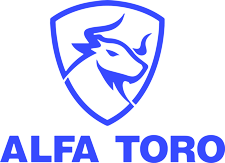Understanding Bid and Ask for Option Traders: The Ultimate Beginners Guide in 2023
Believe it or not, understanding the difference between bid and ask prices is very important. By understanding the difference you can learn to optimize your profits, and avoid by losing a lot in you option trade.
Use the quick links to jump straight to learn more about bid and ask prices.
- What is the Difference Between Bid and Ask Price?
- Why is the Ask Price Higher Than the Bid Price?
- Do I Buy Options at the Bid or Ask Price?
- What Does Bid-Ask Spread Mean?
- What Does a High Bid & Ask Spread Mean?
- Does Selling at Market Order Close at the Bid or Ask?
If you’re ready to learn more about bid and ask, let’s dive into this!
What is the Difference Between Bid and Ask Price?
The difference between the bid and ask price is that the “bid” price is the highest a buyer is willing to pay, and the “ask” price is the lowest price a seller is willing to sell.
With that said, a buyer does not have to buy at the bid price, and a seller does not have to sell at the ask price.
Why is the Ask Price Higher Than the Bid Price?
The reason the ask price is higher than the bid price is because a seller would not want to sell a security or asset at a lower price than what they bought it for.
Do I Buy Options at the Bid or Ask Price?
I personally like to buy options at the ask, and sell at the at market order.
depends…
If the bid and ask spread is very tight–no more than 5¢. If the bid and ask spread is high, I will sell at a limit order and attempt to sell .
So a high bid & ask spread is not good, because you may potentially sell at a much lower price and potentially make you less money, break-even or even come out at a loss.
What Does Bid-Ask Spread Mean?
When you hear the term “bid-ask spread” or “spread” in the option world, it means the difference between the ask price and the bid price.
Let’s look at a couple of examples Target ($TGT) option contracts.

The bid price of $165 call for a weekly contract is $2.73, and the ask price is $2.83. The spread difference is (2.83 minus 2.73) 10 cents.
Let’s look at another contract for the same strike price but two weeks out.

The bid price of $165 call for a two weeks expiration contract is $3.95, and the ask price is $4.15. The spread difference is (4.15 minus 3.95) 20 cents.
What Does a High Bid & Ask Spread Mean?
When there is a high bid and ask spread this could be an indicator that there is not enough volume in the option contract for that given strike price or that buyers and sellers are just not seeing eye-to-eye.
When the bid and ask spread is high that means that buyers and sellers are not seeing eye-to-eye on the price of the option contract. Sellers believe that it’s worth more while buyers believe it’s worth a lot less than what sellers want to sell for.
When the bid and ask spread is high on option contracts, I will wait to see if they narrow down to see if I’m going to enter the trade.
Personally, I like to trade options that have narrow bid-ask prices–the narrowest it can get is 1¢ apart. Typically mega-cap stocks have narrow option bid-asl spreads because of the amount of liquidity they provide.
Does Selling at Market Order Close at the Bid or Ask?
When you sell at market order, it will execute the most immediate & available fill price.
